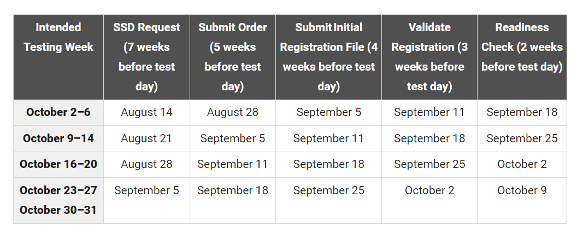Despite the media fanfare over the rollout of the first digital SAT, which will be released in the US in Spring 2024, the fact that the PSAT 10 (called the PSAT/NMSQT when taken in the fall of junior year) and PSAT 8/9 are also changing to an adaptive, digital format seems to have slipped through the cracks. Not only do the digital PSAT 10 and PSAT 8/9 deserve their moment in the spotlight, but schools, teachers, and students will be interacting with the digital PSAT far sooner than the digital SAT: this October, in fact.
What’s changing?
The PSAT 10 and PSAT 8/9 are becoming even more closely aligned with the SAT, so much so that there will be very few differences between these three digital test forms. The 8/9 and 10 will feature the same timing and number of questions as the SAT (which was previously not the case), will cover the same general content, and, like the SAT, will be: digital, adaptive, shorter, easier to administer, and more secure, with more time available per question and faster score report delivery.
Just like on the digital SAT, the Reading and Writing sections of the digital PSATs are combined into one section. Passages are significantly shorter, include poetry and drama texts, and only include a single, multiple-choice question per passage (54 Reading and Writing questions with 54 passages).
Calculators will now be allowed on all sections of the digital SAT, PSAT 10, and PSAT 8/9.
How will the digital PSATs differ from the digital SAT?
The only differences between the three test forms are that the PSAT 10 and 8/9 will have slight variations in which Math standards are included and their frequency. The PSAT 8/9 will also not include the highest-level text complexity band for Reading and Writing. Otherwise, the tests will be identical.
What will the digital PSATs look like?
Just like the digital SAT, the digital PSAT 10 and digital PSAT 8/9 will utilize an adaptive testing format, which is vastly different from the linear testing model used currently. In this new model, each section (Reading and Writing, Math) will be divided into two separate modules (Module 1, Module 2). Within a section, Module 1 and Module 2 will have the same timing and number of questions. Performance on Module 1 will determine Module 2’s set of questions and overall difficulty. The test does NOT adapt on a question-by-question basis; rather, it adapts from one whole module to the next module.

The following chart displays the test structure for the digital PSAT 10 and digital PSAT 8/9.
| Reading and Writing 64 minutes 54 questions | |
| Module 1 32 minutes 27 questions (includes 2 pretest questions) | Module 2 32 minutes 27 questions (includes 2 pretest questions) |
| Break 10 minutes | |
| Math 70 minutes 44 questions | |
| Module 1 35 minutes 22 questions (includes 2 pretest questions) | Module 2 35 minutes 22 questions (includes 2 pretest questions) |
How will the digital PSATs be scored?
Scoring for the new digital SAT suite utilizes the same scoring system and vertical scale as the previous pencil-and-paper SAT suite. Students will also receive their scores in days instead of weeks.
| Testing Program | Total Score Scale | Section Score Scale |
| PSAT 8/9 | 240-1440 | 120-720 |
| PSAT NMSQT / PSAT 10 | 320-1520 | 160-760 |
| SAT | 400-1600 | 200-800 |
How will these changes impact students?
Students should be aware that they will be taking the digital PSATs this fall and familiarize themselves with the new test formats by taking the official PSAT 10 and PSAT 8/9 practice tests available on College Board’s Bluebook application.
How will these changes impact schools?
Schools need to act now to ensure their students and teachers will be prepared to take the digital PSATs in October. Schools will need to register for the PSAT.
This year, the PSAT 8/9 and PSAT/NMSQT testing window is October 2–October 31, 2023. Schools can test on any day of the window, including testing groups of students across different days. Schools may also choose to administer the PSAT/NMSQT on Saturday, October 14, 2023. (Note: This is the only Saturday available for PSAT/NMSQT testing.) Below are important deadlines for schools to keep in mind!

Schools will also need to make arrangements to ensure all students have access to the correct devices and stable internet connections required to take the test.
Have questions about the digital PSATs? Want more information on how to prepare your school, teachers, and students for these changes?
Contact Academic Approach today!


